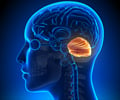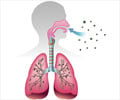Penn researchers are developing a novel approach for selecting drugs to fend off neurodegenerative diseases such as amyotrophic lateral sclerosis (ALS), or Lou Gehrig's disease, with
Penn researchers are using yeast cells to determine usefulness of drugs to combat neurodegenerative diseases such as amyotrophic lateral sclerosis (ALS), or Lou Gehrig's disease.
The researchers focussed their study over a disease protein called DP-43, responsible for developing ALS"We've created a yeast model, the same cells that bakers and brewers use to make bread and beer, to express TDP-43," said Aaron D. Gitler, lead author, PhD, Assistant Professor of Cell and Developmental Biology.
"Remarkably, this protein formed clumps in our simple yeast cells just like it does in human nerve cells. In our paper we determine which segments of the mutated TDP-43 protein cause it to aggregate and which parts cause it to be toxic," he added.
Previous research by Penn investigators found that fragments TDP-43 accumulated abnormally in post-mortem brain or nervous system tissue from individuals diagnosed with either ALS or FTD and
The clumping process of proteins takes a long time in humans but the researchers could model the process within a matter of hours in yeast cells.
This has helped in rapid genetic screening to identify proteins that can reverse the harmful effects of the disease protein with visualizing the clumping and testing molecules that could eliminate or prevent clumping.
Advertisement
TDP-43 resides in the nucleus, but in ALS and FTD it somehow gets sequestered into the cell's cytoplasm, where it forms clumps.
Advertisement
"However, when it was expressed at higher levels, thereby overwhelming the quality control systems of the cell, TDP-43 clumped in the cytoplasm. At even higher levels, TDP-43 became toxic to the yeast cells, making them unable to grow.
"We can screen hundreds of thousands of small molecules to see which can get into a yeast cell and prevent TDP-43 from being toxic.
"Then we can take the hits we find and test them in animal models. We have already made mutations identical to what have been found in patients and have introduced those in the yeast model," he added.
The study appears in Proceedings of the National Academy of Sciences.
Source-ANI
RAS/L









